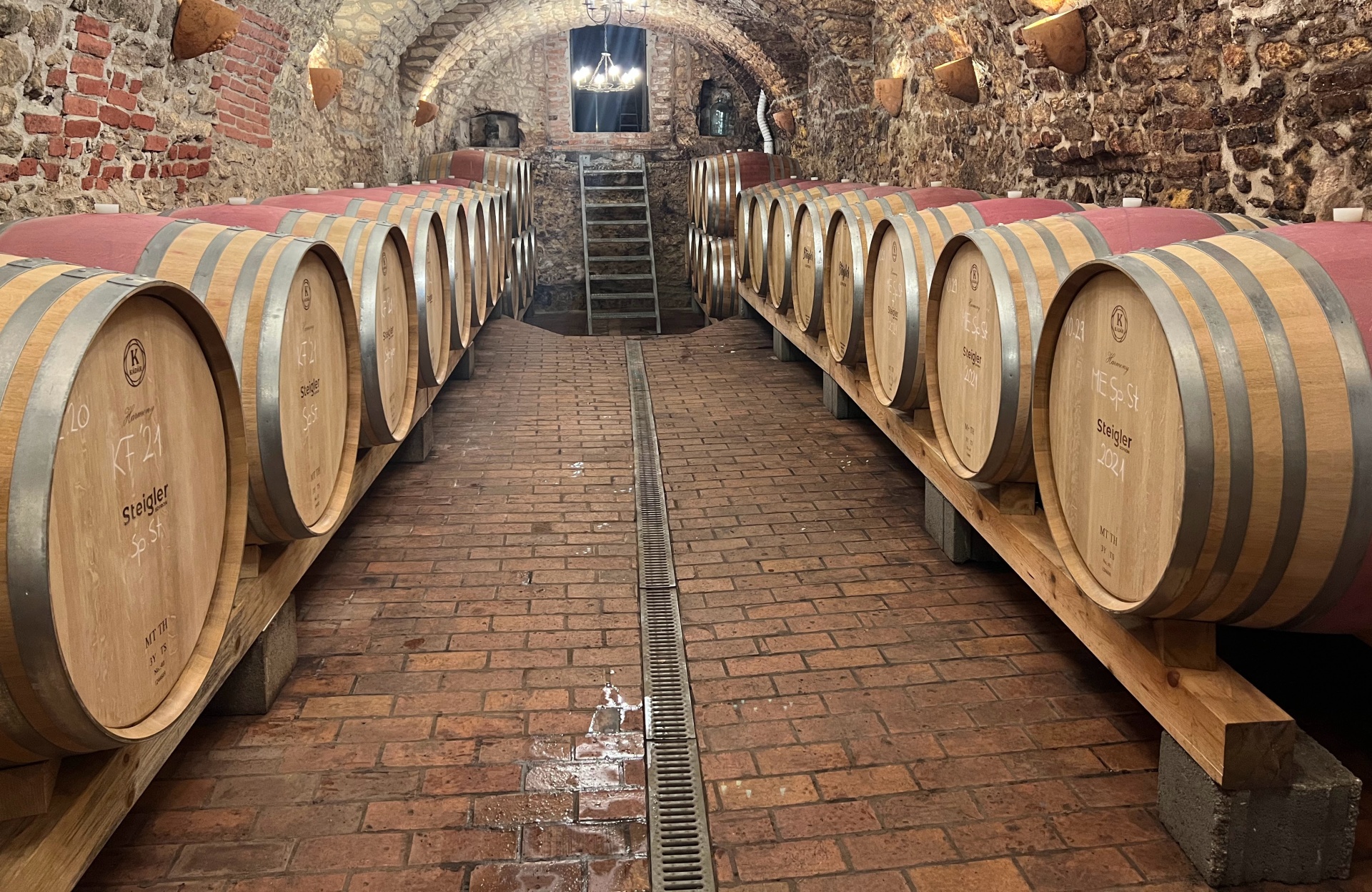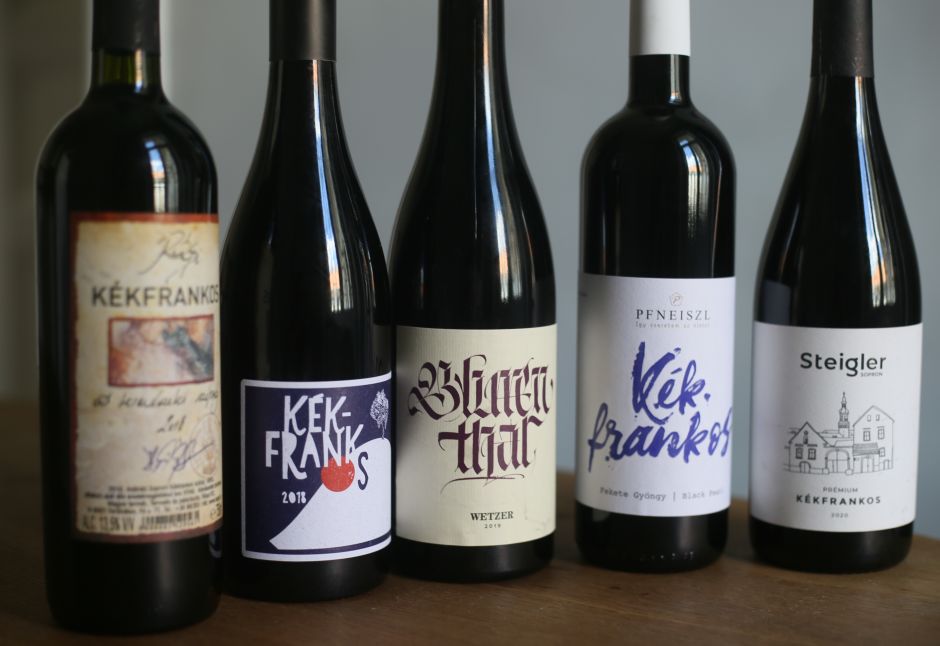Answers to all your questions about the capital of kékfrankos (blaufränkisch).

What is the Sopron wine region and what happens there?
Sopron is a historic red wine region by Lake Neusiedl (Fertő tó) near the Austrian border in western Hungary, about two hours away from Budapest by car. The 60,000-resident city of Sopron anchors the area, which consists of 16 villages across 1,400 hectares (3,700 acres) of planted vines. Sopron, which used to be the capital of Burgenland before the collapse of the Austro-Hungarian Empire in 1918, is best known for its red wines made from kékfrankos (blaufränkisch), a grape also popular in neighboring Austria.

Click here to expand the wine map.
What should I know about the history of Sopron wines?
Winemaking in Sopron, like in the rest of Transdanubia, goes back to the Romans who ruled the area since the 1st century CE (Sopron’s Roman name was Scrabantia). The Hungarian tribes continued to produce wine after conquering the land in the 10th century, as did the Pannonian Avar, Slavic, and German people who had been there. A large number of German settlers came to Sopron in the 13th and 14th centuries, bringing with them a more advanced winemaking culture.
Sopron escaped the nearly two-centuries-long Ottoman Occupation of middle-Hungary in the 16th and 17th centuries — being ruled by the Habsburgs instead — and became an important center for winemaking and commerce. Most of its wines were exported, mainly to Czech (Moravia, Bohemia) and Polish (Silesia) territories.
Starting in 1890, the Europe-wide phylloxera epidemic destroyed much of Sopron’s vineyards. During the reconstruction, winemakers planted new grape varieties they believed were more resistant to diseases (and grafted them onto American rootstock, which was immune to the bug). This was when kékfrankos (blaufränkisch) became the dominant grape of this previously white wine region.
After World War I, Hungary lost much of its territories to its neighbors. The area west of Sopron, today known as Burgenland, became part of Austria. Soon, two additional tragedies befell Sopron, both with catastrophic impact on winemaking. First, in 1944 the region’s Jewish population was deported and most of it killed in Auschwitz. Second, in 1946, nearly two thousand German families were expelled from Sopron for being “collectively guilty” of German war crimes in WWII. In the vast majority of cases, their culpability consisted of identifying themselves as German in the 1941 census (the same thing happened in other German-populated wine regions like Szekszárd and Villány). With these events, Sopron lost its essential wine merchants and winemakers.
During the Communist period (1948-1989), especially from 1959, state-owned cooperatives planted new vineyards on low-lying (and lower quality) sites that could be cultivated by machines. The result was mediocre wines in mass quantities. Starting in 1990, these state-owned cooperatives were privatized and the capitalist era unleashed a revival of family wineries, some of which today can stand up to those across the border in Austria.
Why is Sopron known as the “most loyal city” in Hungary?
After World War I, Hungary lost about two thirds of its territories to the neighboring countries. The detached areas included Burgenland, a small, German-majority region in western Hungary whose capital was Sopron. However, after Hungarian paramilitary units refused to surrender the area, Hungary and Austria agreed to a deal: Hungary would withdraw the troops and hand over the area, but the fate of Sopron and eight nearby villages would be decided by a referendum. In 1921, the residents, who were majority German-speaking, voted to remain in Hungary and hence the “most loyal city” label.
What’s the climate and the soil composition of Sopron’s vineyards?
Located in northwest Hungary and with a sub-Alpine climate, Sopron is one of the coolest wine regions in Hungary. The vineyards occupy the south and east-facing hills of the Sopron Mountains as well as plots overlooking Lake Fertő (Neusiedl). The lake influences the local climate, yielding cool summers and relatively mild winters. The grapevines sit on a soil of limestone, slate, and loam. Local winemakers believe that limestone and slate tend to yield more minerally and elegant, the loam somewhat heavier wines.
Why are many Sopron wineries located in the city rather than in the vineyards?
Unlike in most wine regions where the wineries are located within or near the vineyards, in Sopron, historically people made wine in the cellar of their homes. Although some people claim this unusual practice was for reasons of safety, the more likely explanation is cultural: German and Austrian winemakers had been making wine this way for centuries.
What kinds of wines are made in Sopron?
Sopron is a red-wine region best-known for its kékfrankos (blaufränkisch) wines which account for about two thirds of the red grapes. The remainder consists mainly of a similar grape, Zweigelt, named after the Austrian scientist, Fritz Zweigelt, who developed this cross between blaufränkisch and St. Laurent in 1922. About twenty percent of Sopron’s annual volume comes from white wines, especially Grüner Veltliner and Chardonnay.
What should I know about kékfrankos (blaufränkisch) wines?
The kékfrankos (blaufränkisch) grape likely originated in the 18th century in southern Germany and spread from there to the territories of what later became Austria-Hungary. After the phylloxera plague destroyed the vineyards, many Hungarian winemakers replaced the grapes with kékfrankos because it was viewed as more resistant to diseases. Interestingly, Sopron had been a white wine region and most wines were made from furmint (they even made sweet aszú wines here).
Planted on nearly 8,000 hectares, kékfrankos is by far the most planted red grape in Hungary today, accounting for 40 percent of the total. The grape is so dominant in Sopron that the city is known as the “capital of kékfrankos” (the variety is also popular in Eger and Szekszárd).
At its best, kékfrankos exudes aromas of red and black fruit with a slightly spicy and earthy taste. Due to its thick skin, it can yield wines that are high in tannins but many different styles exist. “If a comparison had to be made, kékfrankos (blaufränkisch) is not unlike a Cabernet Franc or a Syrah from a cooler region,” said one of Sopron’s leading winemakers, Franz Reinhard Weninger.

How are Sopron’s wines different from those across the border in Austria (Burgendland)?
It’s a mystery that the blaufränkisch of Burgenland in Austria are well-known while only the most fanatical drinkers have heard of Sopron’s wines in Hungary. Until an “artificial” border split the region in two following the collapse of the Austro-Hungarian Empire in 1918, the two sides were part of the same wine region, with Sopron its capital. The climate, soil, and grape varieties are nearly identical on both sides. It takes ten minutes by car to get to the Austrian side from Sopron. So what’s the reason for this seeming paradox?
A long list of tragic events and wrong political decisions throughout the 20th century. The Holocaust killed Sopron's Jewish wine merchants, then the expulsion of German families from Hungary after WWII got rid of many winemakers. Then came the Communist regime. It’s an old cliche to blame it all on the dysfunctional Communist rule, but there’s some truth to it: Winemaking traditions in Hungary gradually evaporated as state-owned cooperatives replaced the small family wineries. The Sopron kékfrankos was nothing to be proud of in the decades between 1950 and 1990.
But Communism ended more than thirty years ago! And some of Sopron’s wineries are catching up to the Austrian neighbors and starting to carve out a name for themselves. Two wineries in particular – Weninger and Wetzer – impressed me with their clear vision, professional approach, and beautiful wines, and two others — Pfneiszl and Steigler — aren’t far behind.
How are Sopron’s kékfrankos wines different from other kékfrankos-heavy regions in Hungary such as Szekszárd and Eger?
Tasting is the best way to find out! It’s never easy to generalize and exceptions abound. Having said that, Szekszárd’s loess soil and more southern exposure often yield lighter-bodied wines that are slightly higher in alcohol, while those in Sopron and Eger tend to be more focused and elegant.
Is the wine region worth visiting?
Absolutely. The Old City of Sopron is charming with beautiful Roman, medieval, and Baroque remains. Given the proximity to the Austrian border, the city feels multicultural in a way that other Hungarian cities don’t (almost everywhere Hungarian and German chatter mingle in the air). The service sector — restaurants, hotels — is more developed, meaning that visitors can expect an all-around fulfilling experience. Also, since the region is small and under the radar, the wineries tend to be more accessible than usual with advance notice.